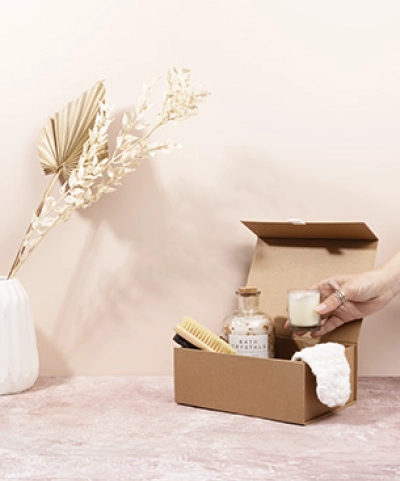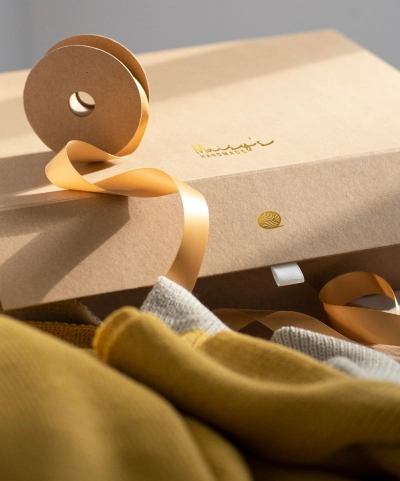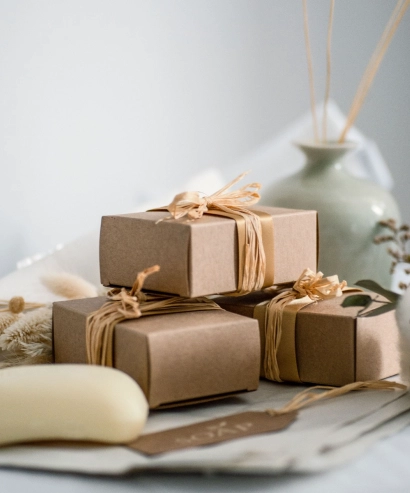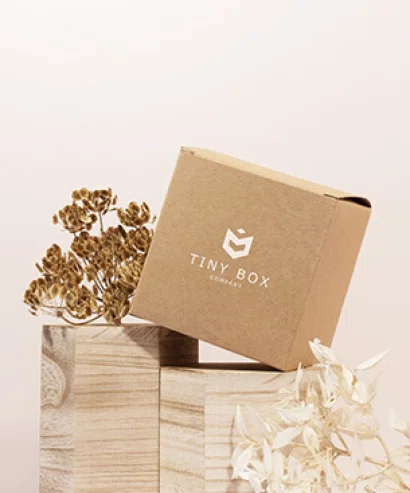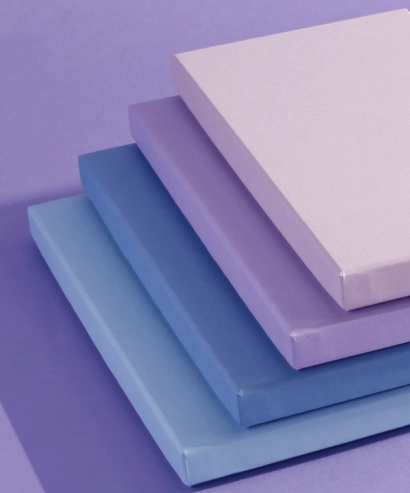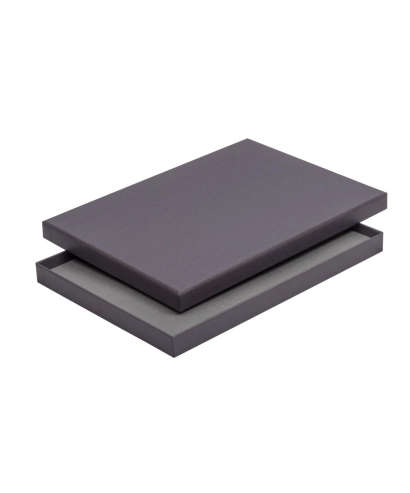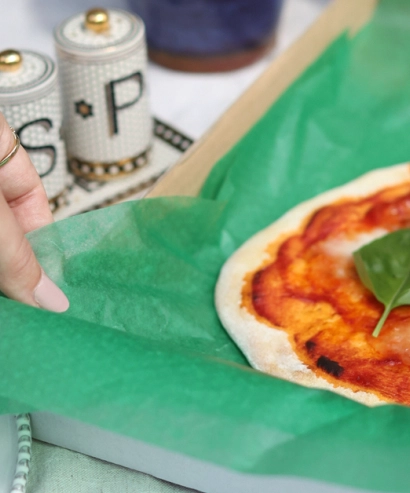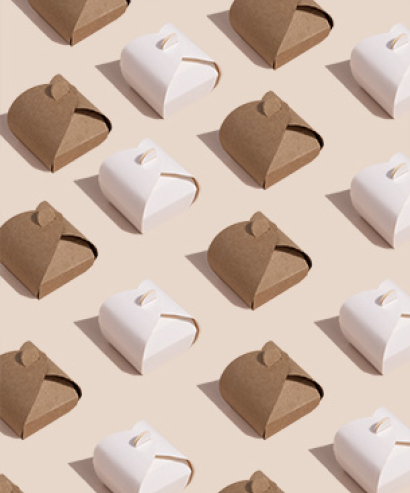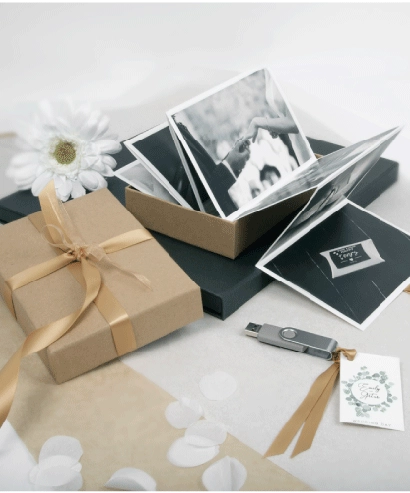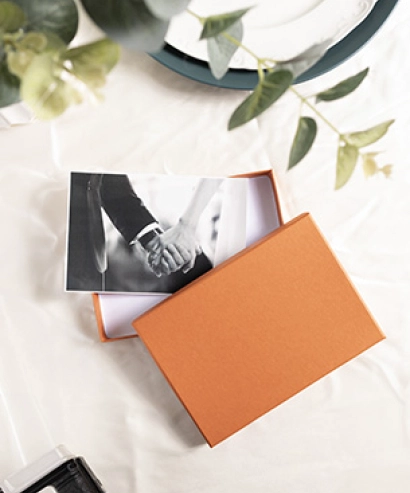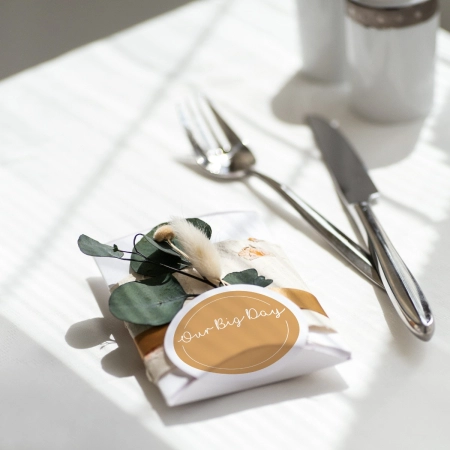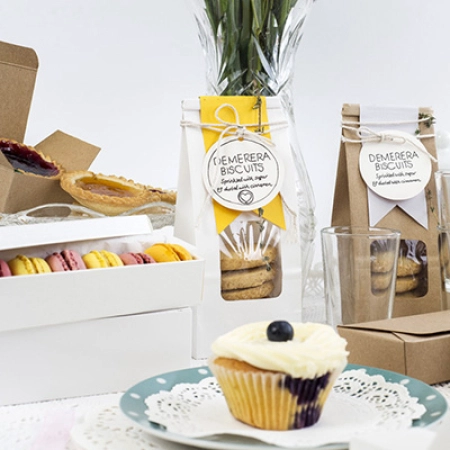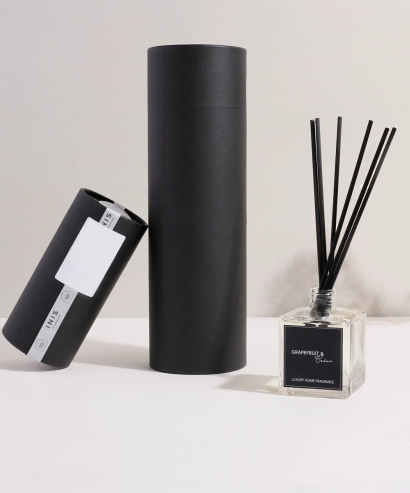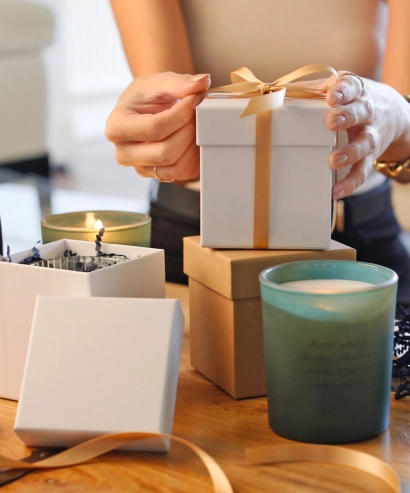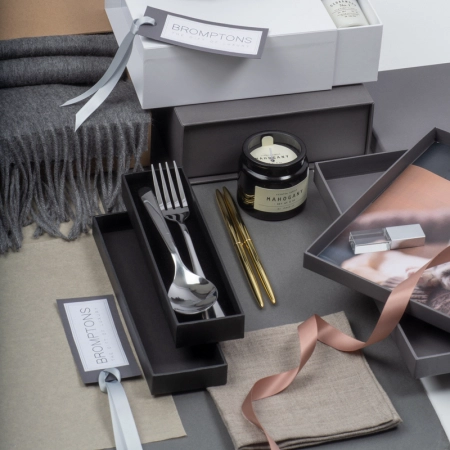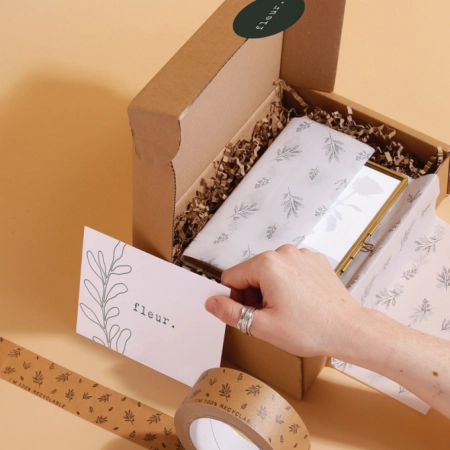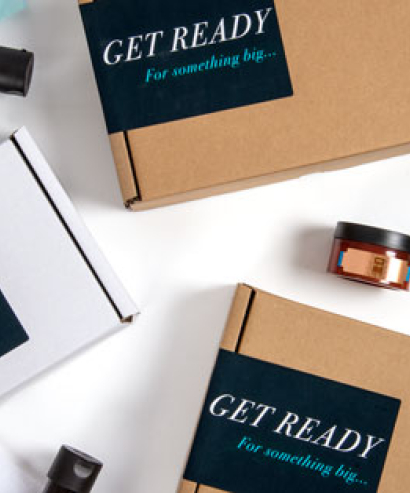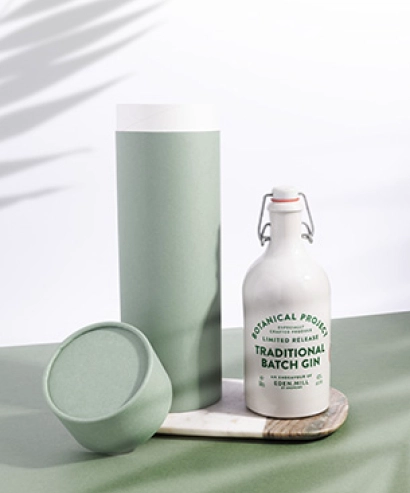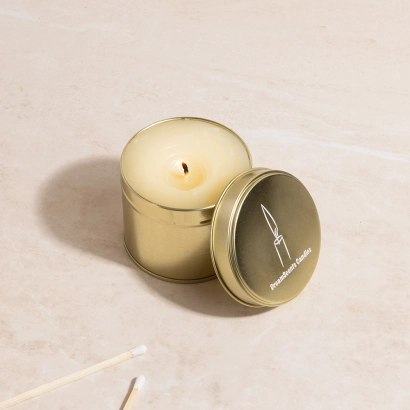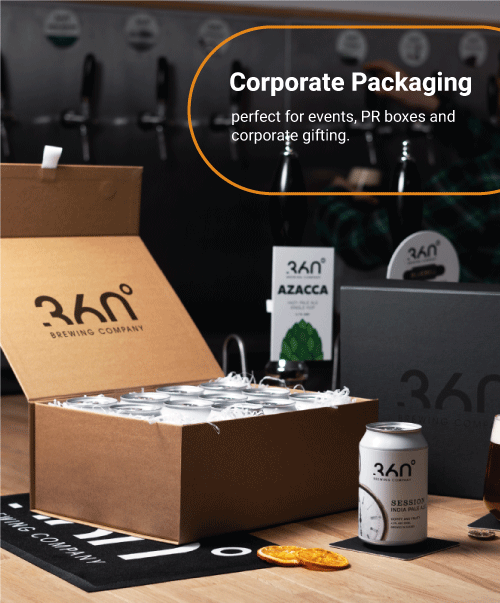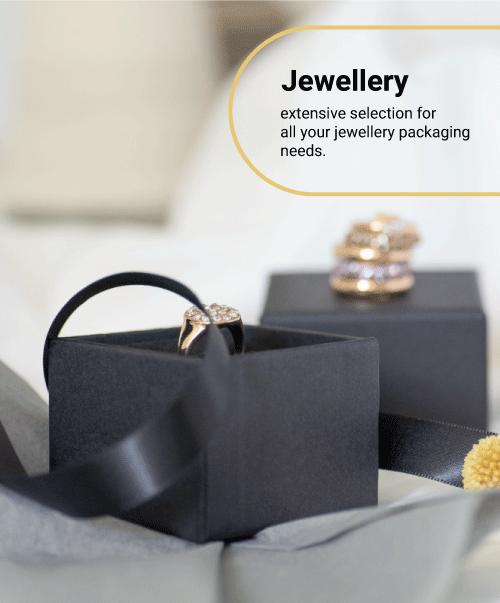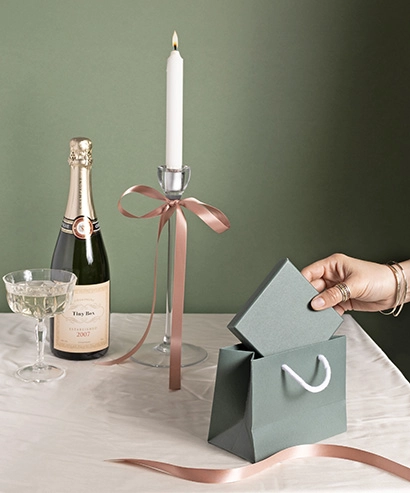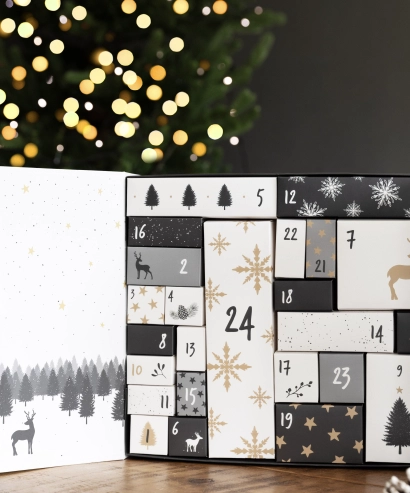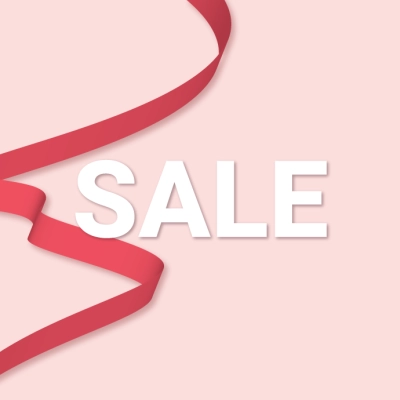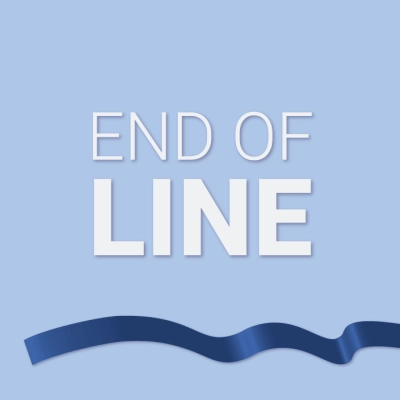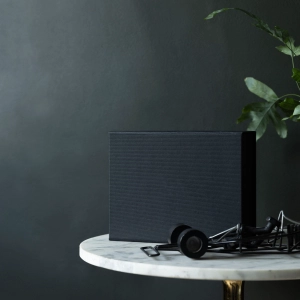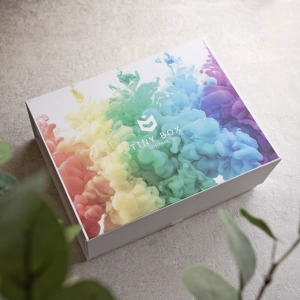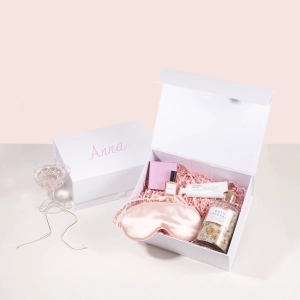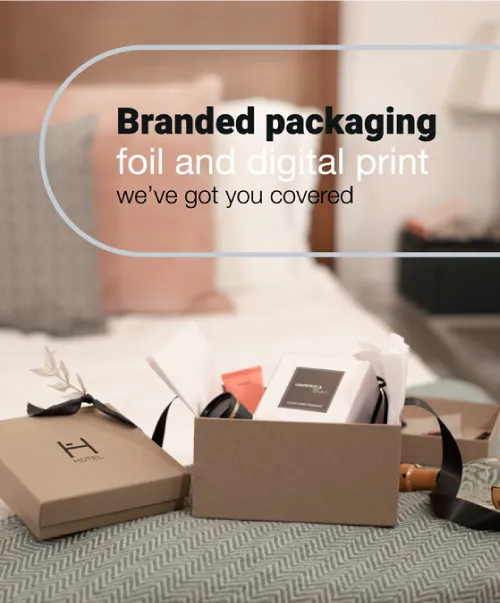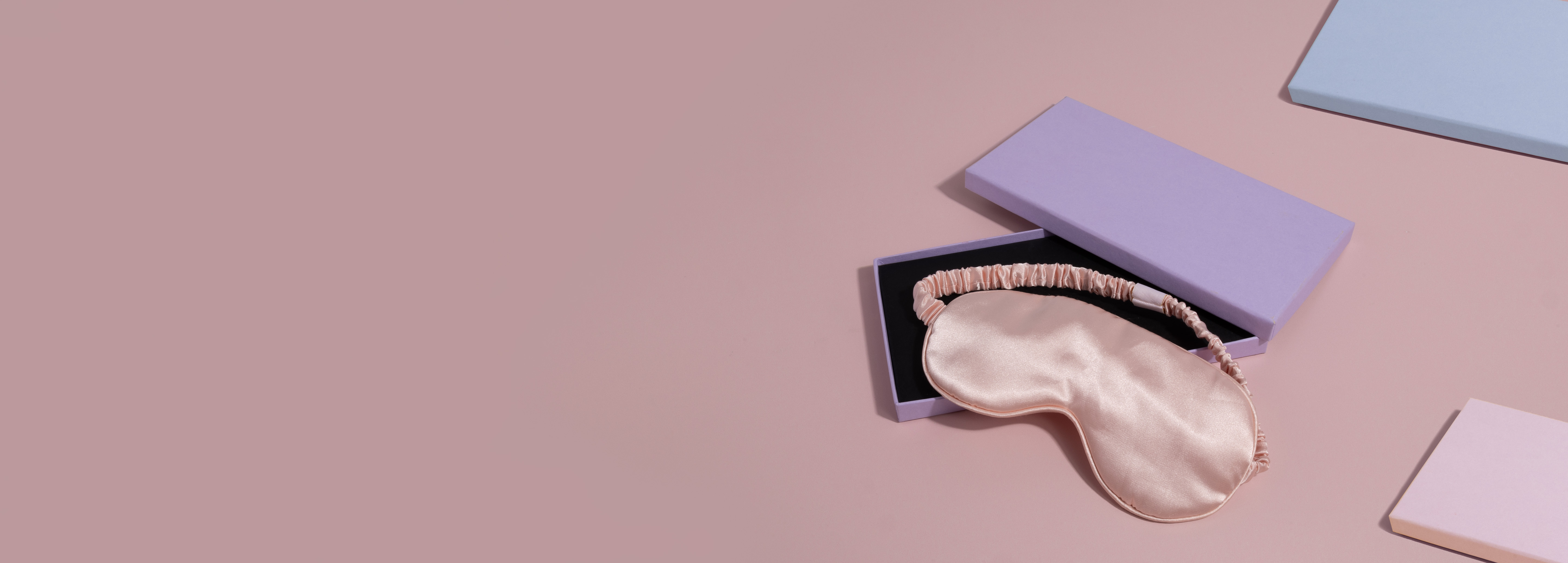
Shopping for packaging can feel tricky sometimes, especially when you stumble across unfamiliar terms and definitions. With all sorts of different box types out there, do you know your rigid lid and base boxes from your pillow boxes? If not then have no fear, we've written this handy box guide to break it all down for you - so dive in and let's turn you into a packaging pro!
Types of gift box
Rigid box
Rigid boxes (above) are sturdy and unyielding - they don't fold, collapse or compromise, offering stellar protection for your fabulous products inside. Popular rigid box styles include lid and base boxes, shoulder boxes, and hinged boxes - definitions on each of these and more below!
Flat pack box
Flat packed gift boxes are the ultimate space-savers - they fold down for nice and easy storage, providing the perfect solution if you want to order a large quantity but are slightly limited on where you can keep them. Styles range from simple one piece flat packed gift boxes and two piece flat packed gift boxes (with a separate lid and base), to magnetic snap shut boxes, and pillow boxes.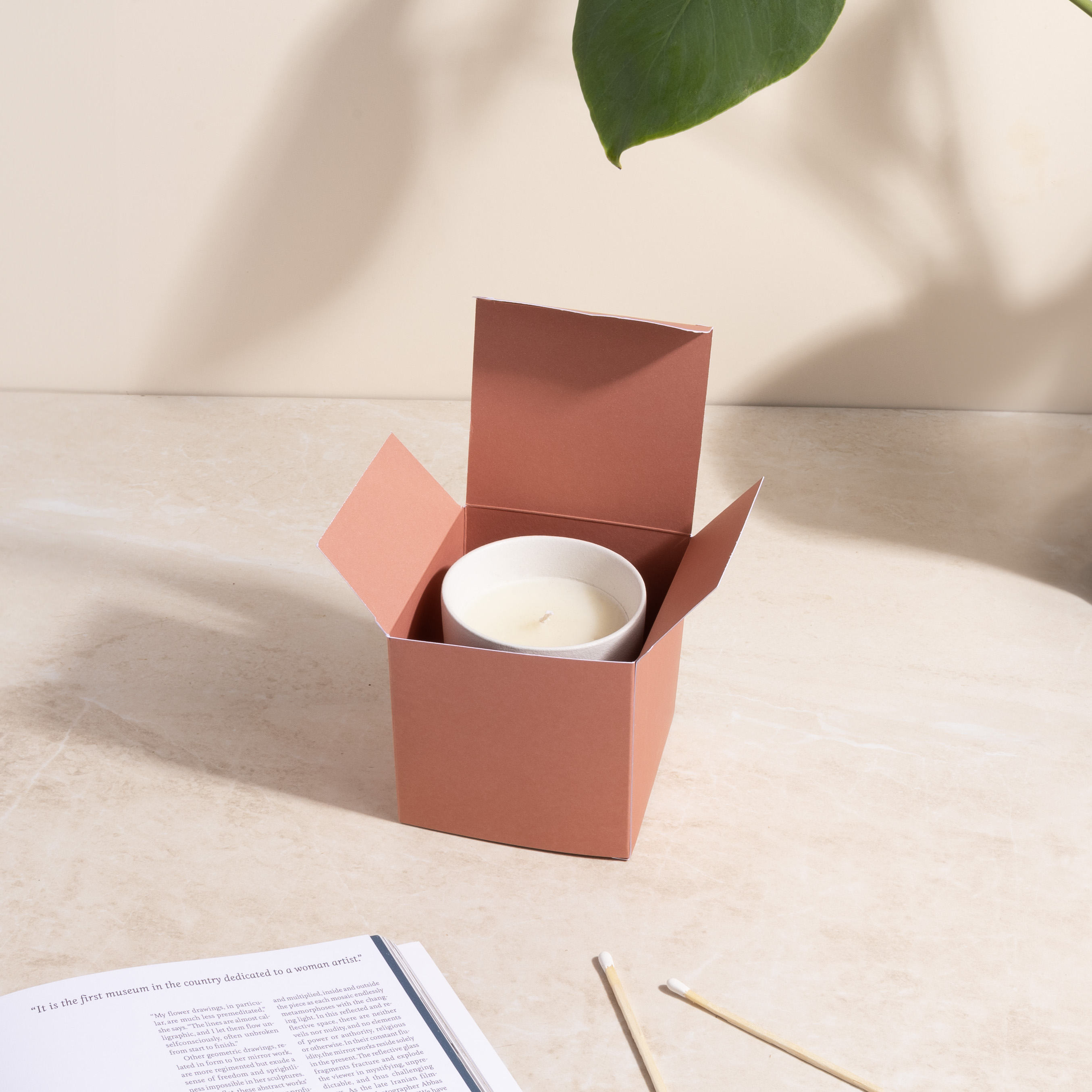
A one-piece flat pack box
Lid and base box
Lid and base boxes are a classic choice. It's what it says on the tin - two separate pieces, quite simply the lid, and the base. The lid fits over the base to provide a snug and secure closure, and you can use them as gift boxes for items like jewellery, clothing, and accessories.
Shoulder box
Shoulder boxes are essentially just lid and base boxes, but they take it up a notch in that they feature an additional inner tray, or ‘shoulder’. This can be the same colour as the box itself, or it could contrast to create a striking two-tone design - either way, it adds that little bit of luxury to your gift box, perfect for your perfumes, cosmetics, and higher-end gifts.
Hinged box
Hinged boxes are also rigid boxes - but this time the lid and base are joined together on one hinged edge, with many also including a ‘shoulder’ piece for that extra touch of class. Use these as boxes for engagement rings, or to present other jewellery items, or as keepsake boxes.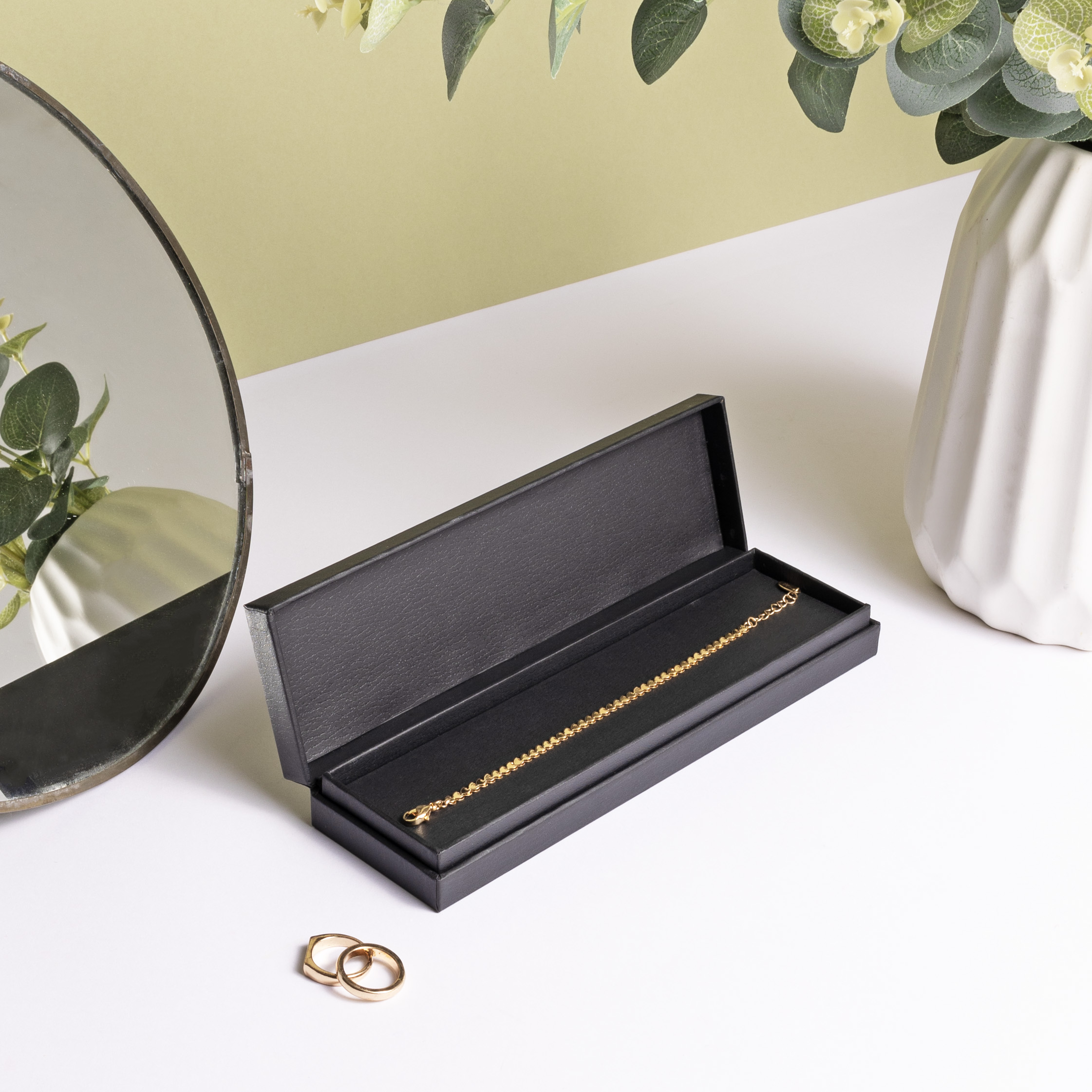
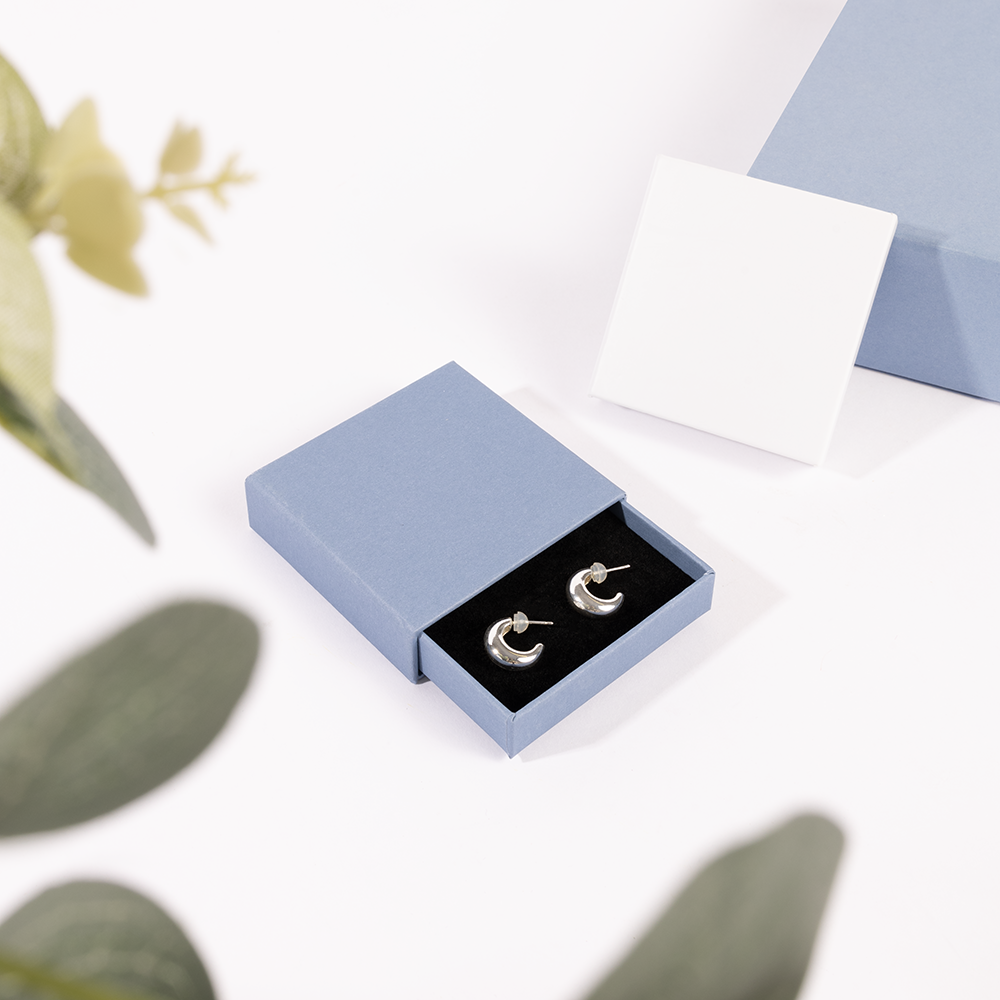
A hinged box with a 'shoulder', and a matchbox
Drawer box
Drawer boxes come as two separate pieces - a slip case, which is an outer sleeve that is open at one end, and an inner drawer that slides neatly into it. These drawers often feature a pretty ribbon tab or thumb cut for easy opening, adding something a little bit different to the unboxing experience.
Matchbox
Matchbox boxes are very similar to drawer boxes, in that they feature a sleeve and sliding drawer, but generally don't have a ribbon tab. Instead, the outer sleeve is open at both ends and the drawer can slide either way. You can use these for all sorts of delicate items, like earrings (see the pretty pic above) or dainty bracelets and necklaces - or, of course, they can store matches.
Magnetic box
Magnetic boxes make fab hampers - with a simple flat pack design that has four self-adhesive corner tabs for super easy construction. They close with a magnetic snap shut, with the magnets embedded in the flap and main body of the box, allowing for a secure closure. These can also be used as favour packaging, perfect for a bridal party or baby shower.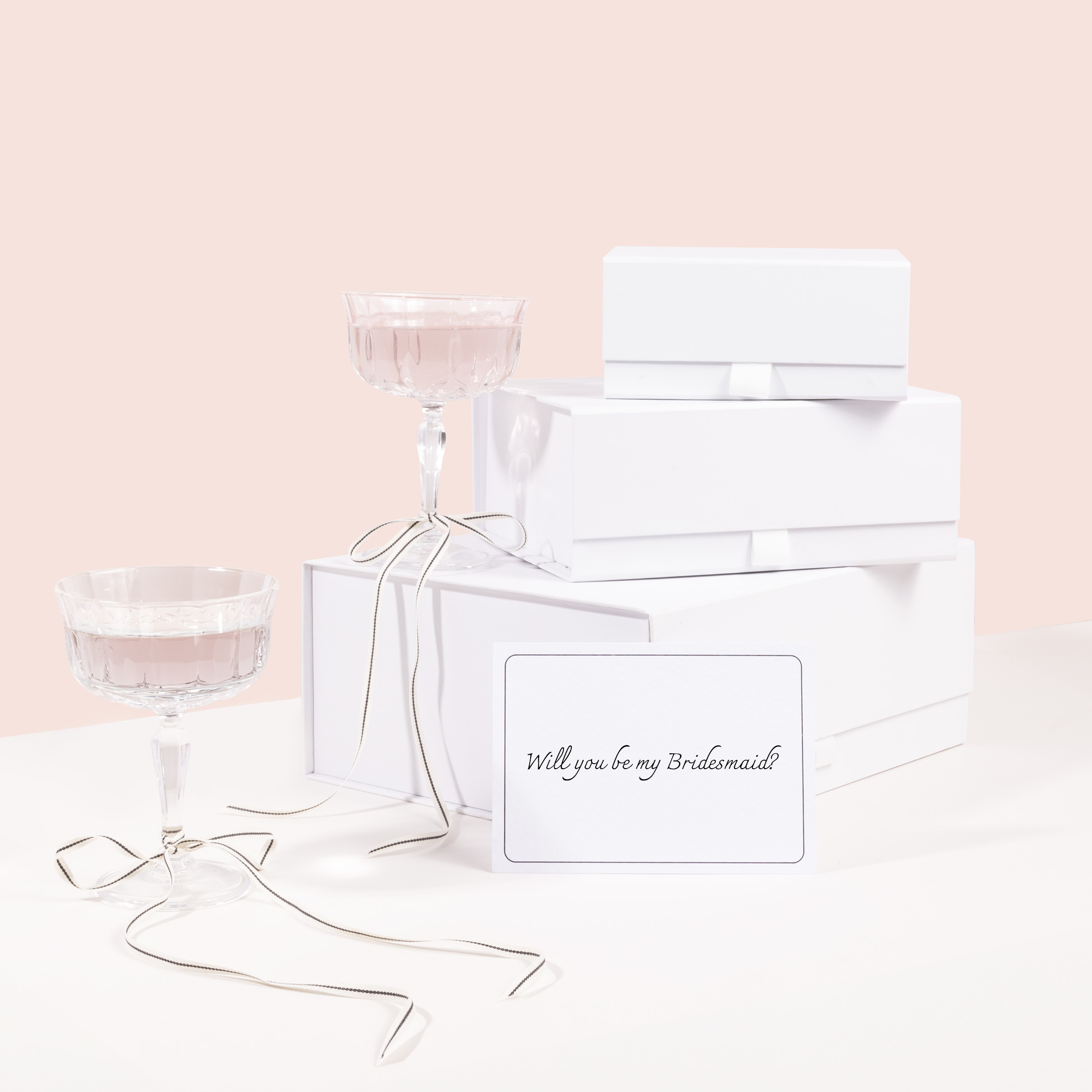
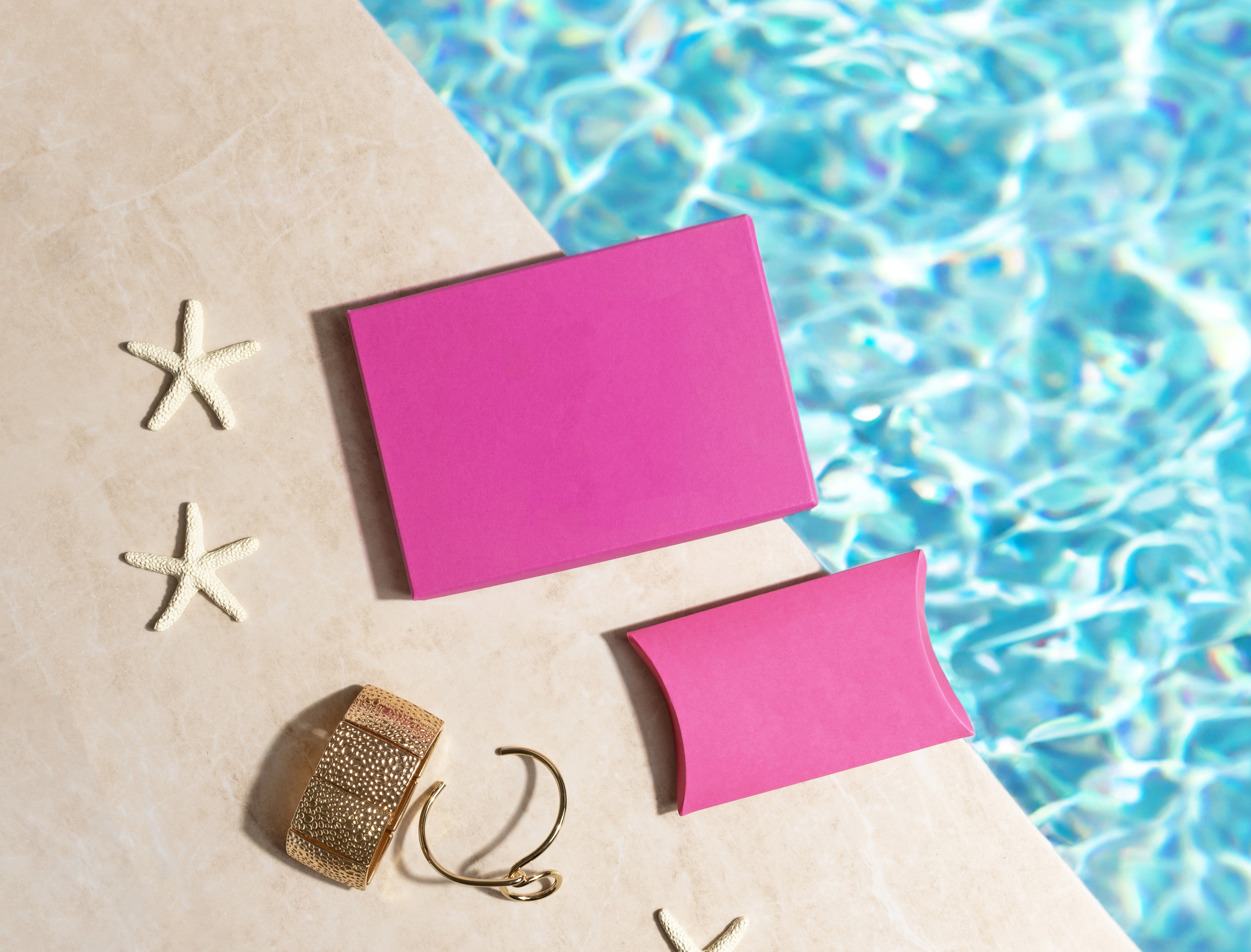
Magnetic boxes, and a lid and base box and pillow box
Pillow box
Pillow boxes are curved boxes that when assembled resemble - that's right - pillows, and can open at both ends. They each come as a flat pack that will just pop into shape, no tape or glue required, and are again great for more delicate pieces.
Gable box
Lunchbox style picnic gift boxes, or gable boxes, feature a built-in handle at the top, created by folding the two top flaps together and securing them - no glue or tape needed here either. The handle makes the box easy to carry, making it a popular choice for gift packaging, food containers, party favours, or takeaway boxes.
Now you've got your head around all the different box types - here are a few more handy definitions to help you navigate our packaging world:
Corrugated cardboard
Corrugated cardboard is often used in postal boxes as it offers superb protection for products in transit. It's made up of three layers - two sheets on the outside and one in the middle which has a rippled shape. It’s popular for its durability and versatility, and it's pretty sturdy and reliable too.
GSM and microns
You've probably spotted the GSM and micron values when shopping for packaging on Tiny Box Company - but what on earth are they, and why are they important? Both are nice and easy to understand - GSM stands for grams per square metre, and quite simply refers to the weight of the paper or card. The higher the GSM value, the heavier the material. Microns, on the other hand, are all about the thickness of the paper or card. A micron is very, very tiny - equal to one thousandth of a millimetre - so a higher micron value just means a thicker material.
There isn't actually a direct correlation between GSM and microns, but they're often linked as typically a material with a higher GSM will have a higher micron value. It makes sense when you think about it - but bear in mind it may not always be this way. Take paperboard for example - this might have a high GSM but a lower thickness in microns, indicating a dense and compact material. Or a plastic film may have a low GSM but a high thickness in microns, suggesting a lightweight but thicker material. For more on both GSM and microns, check out our blog post here.
Foil and digital printing
Foil and digital printing can both be used to pretty up your gift boxes and bags with a bit of personalisation - foil printing uses heat and pressure to apply foil to a surface, and is perfect in printing on things like invitations and business cards, and, of course, packaging. At Tiny Box Company our hot foil print is available with a gloss, metallic foil, satin, or matte finish, giving your packaging a brilliant, finished look.
Digital printing, on the other hand, allows the flexibility of full colour print, providing great coverage. For more on the differences in foil, digital, and litho printing, click here, and for more on which one’s best for off the shelf packaging, click here.
Unpacking different box types
Now that you're up to speed on the main box types, you're all set to make the best packaging decisions for your small business. Still feeling a bit lost? No worries! Book a consultation with our Tiny Box team, and we'll guide you to packaging perfection!

